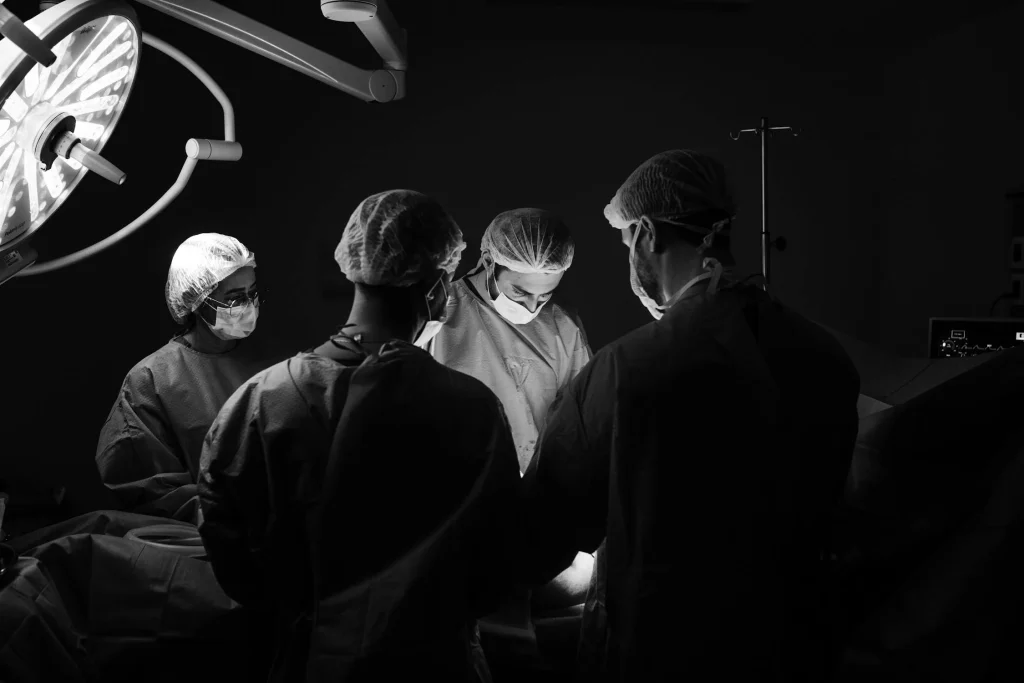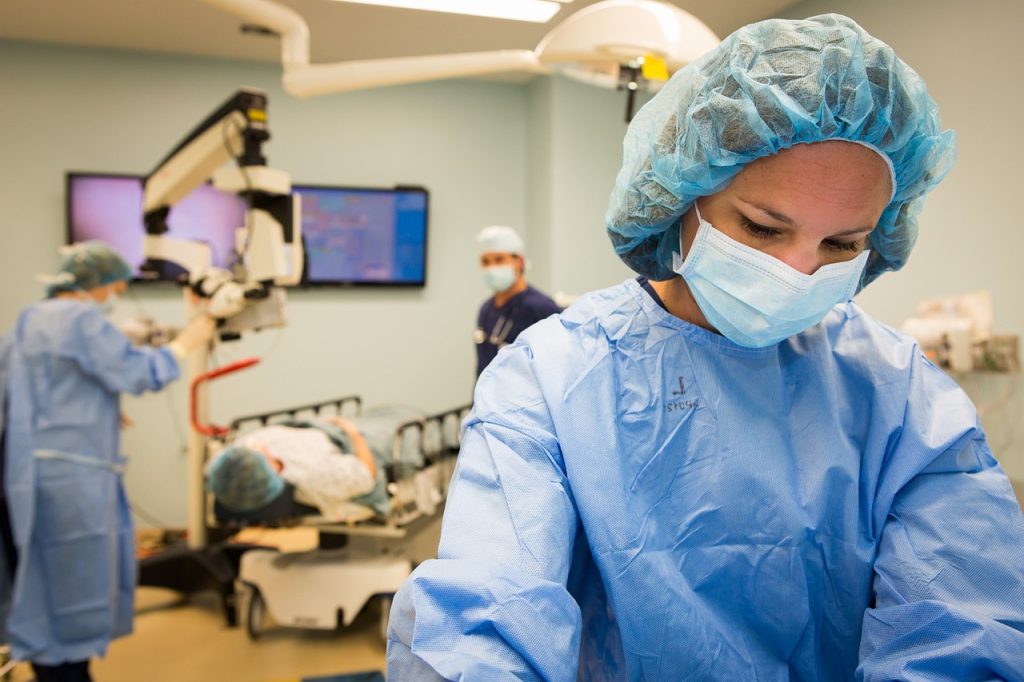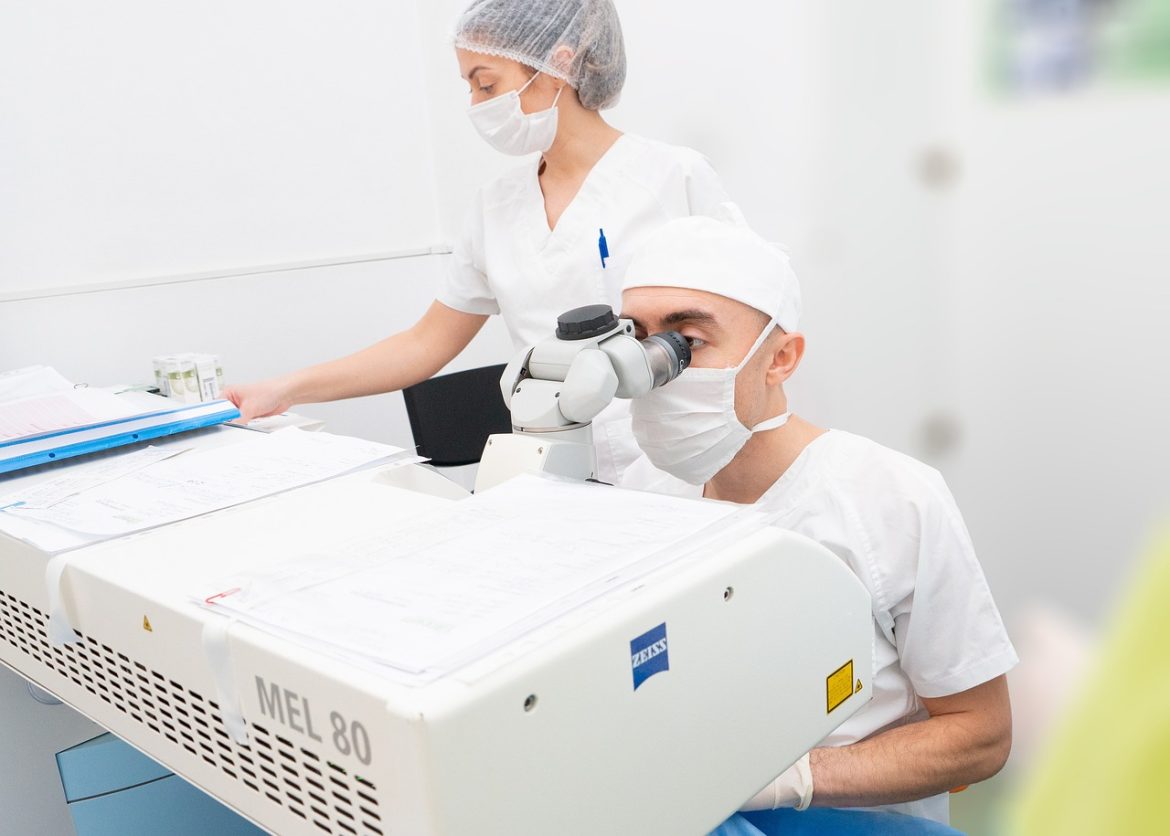Cataract surgery is one of the most common and effective procedures performed in the field of ophthalmology, offering a reliable solution for millions of individuals worldwide who suffer from impaired vision due to cataracts. In this article, we will explore what cataracts are, the importance of cataract surgery, the types of procedures available, what to expect before, during, and after surgery, and the benefits and risks associated with the procedure.

What Are Cataracts?
Cataracts occur when the natural lens of the eye, located behind the iris and pupil, becomes cloudy or opaque over time. This clouding disrupts the passage of light to the retina, leading to blurred or dimmed vision. Cataracts typically develop slowly and may affect one or both eyes. Common symptoms include:
- Blurry or cloudy vision
- Difficulty seeing at night
- Sensitivity to light and glare
- Seeing “halos” around lights
- Fading or yellowing of colors
Cataracts are often age-related, but they can also result from genetic factors, eye injuries, certain medications, or underlying health conditions such as diabetes.
The Importance of Cataract Surgery
Cataract surgery is the primary treatment for cataracts and is recommended when the cataracts interfere with daily activities and quality of life. The goal of the surgery is to remove the cloudy lens and replace it with a clear artificial lens, known as an intraocular lens (IOL). This procedure restores vision and helps patients return to their normal activities without the visual impairments caused by cataracts.
Without surgical intervention, cataracts can progressively worsen, leading to significant vision loss and impacting one’s ability to perform tasks such as reading, driving, and enjoying hobbies. Early diagnosis and timely treatment are crucial for preserving vision and maintaining a good quality of life.
Types of Cataract Surgery
There are two main types of cataract surgery:
- Phacoemulsification (Phaco)
Phacoemulsification is the most common type of cataract surgery. It involves making a small incision in the eye and using ultrasonic waves to break up the cloudy lens into tiny pieces. These pieces are then gently suctioned out, and a clear IOL is implanted in place. This technique is minimally invasive and typically results in a quicker recovery time and fewer complications. - Extracapsular Cataract Extraction (ECCE)
Extracapsular cataract extraction is a traditional technique used less frequently today. It involves making a larger incision to remove the entire lens, including the outer capsule. An IOL is then placed into the eye. This method may be used for more advanced cataracts or when other techniques are not suitable.
Advances in technology have made phacoemulsification the preferred method for cataract surgery, thanks to its effectiveness and the benefits of a smaller incision.
What to Expect Before Cataract Surgery
Before cataract surgery, your ophthalmologist will conduct a comprehensive eye examination to assess the severity of the cataracts and determine the best treatment approach. This examination may include:
- Visual Acuity Test: To measure how well you see at various distances.
- Slit-Lamp Examination: To examine the front part of your eye, including the cornea and lens.
- Retinal Exam: To check the health of the retina and optic nerve.
- Ocular Ultrasound: To measure the size and shape of your eye and determine the appropriate IOL power.
Based on these tests, your ophthalmologist will discuss the best IOL options for your vision needs and preferences.

What to Expect During Cataract Surgery
Cataract surgery is generally performed on an outpatient basis, meaning you can go home the same day. The procedure typically takes less than 30 minutes and is done under local anesthesia, so you will be awake but won’t feel any pain.
During the surgery, the ophthalmologist will:
- Administer Anesthesia: Eye drops or an injection to numb the eye.
- Make an Incision: A tiny incision is made to access the cataract.
- Remove the Cataract: The cloudy lens is broken up and removed.
- Implant the IOL: A new, clear lens is placed into the eye.
- Close the Incision: The incision is self-sealing and does not require stitches.
You will be awake during the procedure but will be given sedatives to help you relax.
What to Expect After Cataract Surgery
Post-surgery, you may experience mild discomfort, blurred vision, or a scratchy sensation. These symptoms are common and usually resolve within a few days. Your ophthalmologist will provide specific aftercare instructions, which may include:
- Using Eye Drops: To prevent infection and reduce inflammation.
- Wearing an Eye Patch or Shield: To protect your eye as it heals.
- Avoiding Certain Activities: Such as heavy lifting or bending over, to prevent strain on your eye.
Most patients experience improved vision within a few days, though it can take a few weeks for your vision to fully stabilize. Regular follow-up appointments will be scheduled to ensure that your eye is healing properly and that the IOL is functioning as expected.
Benefits and Risks of Cataract Surgery
Benefits:
- Restored Vision: Improved clarity, brightness, and contrast of vision.
- Enhanced Quality of Life: Ability to return to daily activities like reading and driving.
- Minimal Downtime: Most patients resume normal activities within a week.
Risks:
As with any surgical procedure, cataract surgery carries some risks, though they are relatively rare. Potential risks include:
- Infection or Inflammation: Rare but manageable with medication.
- Vision Changes: Such as glare or double vision, usually temporary.
- Retinal Detachment: A rare complication that requires immediate attention.
Overall, the benefits of cataract surgery far outweigh the risks for most patients, making it a highly effective treatment for restoring vision.

Conclusion
Cataract surgery is a safe and effective procedure for treating cataracts and restoring clear vision. With advancements in surgical techniques and technology, the procedure offers significant benefits with minimal risks and a quick recovery time. By understanding what cataracts are, the types of surgeries available, and what to expect before, during, and after the procedure, you can make informed decisions about your eye health and take the steps necessary to maintain a high quality of life.
If you or a loved one are experiencing symptoms of cataracts, consult with an ophthalmologist to discuss your options and explore how cataract surgery can help you regain the clarity of vision you deserve.


